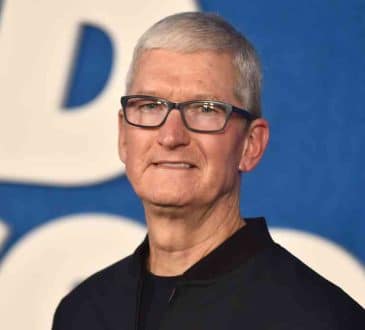The Biggest Leadership Mistake You Can Make

The most important thing an Enlightened Leader can do is to view people as individuals and, in turn, respect who they are and what they’re all about. When you make everyone feel as though they belong and avoid creating unnecessary divisions, you open the doors to communication, cooperation, innovation, and motivation.
Most of all, you create higher employee engagement, which means nothing but good news for business results. The Society for Human Resource Management (SHRM), which has over three hundred thousand HR and business executive members in 165 countries, puts it like this: “Employee engagement has emerged as a critical driver of business success in today’s competitive marketplace. High levels of engagement promote retention of talent, foster customer loyalty, and improve organizational performance and stakeholder value.”
When your employees feel included in a company’s agenda, they generally respond by approaching their work with more enthusiasm. When they feel left out or unheard, however, the opposite happens. A part of their spirit gets crushed, and they often end up going through the motions. Many leaders would say they don’t care about their employees’ spirits. To that I would say that those leaders won’t realize the potential those employees have to offer.
Too many times, leadership unwittingly creates disengagement simply because they’re completely focused on a business challenge. For instance, an executive may experience some early success and begin to feel they know better than everyone else—so they ignore employee input. Instead, they expect everyone to get in line. There is always a backlash to this kind of “my way or the highway” attitude that negatively impacts a business operation. Believe me, I’ve seen it happen for myself—because there was a time when I made it happen. And it almost stopped my career in its tracks.
Back in the 1990s, I had brought in, with the help of my team, over a billion dollars of revenue for Dell when I was heading up their West Coast sales operation focused on the Medium Size Business segment in the states. Frankly, my ego got too big. So, in 2000, when Dell sent me to China to help turn around their sales in that mammoth country, I had the biggest eye-opening experience of my life.
I went there ready to dominate their burgeoning computer market. After all, Michael Dell had asked me to go there himself because the existing team there was struggling—so I was kind of full of myself. I also totally ignored the fact that I was in a completely different culture that did business in a completely different way.
I wanted to do it MY way. I was convinced I only had to use the Dell model as I had in America and China would soon be buying billions of dollars of product from my company. That wasn’t how it turned out. You want to know how bad employee disengagement can get? Here’s how bad. I’d be in meetings and some of the locals who worked for us would start talking Chinese to each other. What were they saying? I had no idea. And when I found out, I wasn’t pleased. They were telling each other to simply nod and go along with whatever I said, encouraging everyone to patronize me by saying things like, “Just play along with the guy, then we’ll go out and do things the way we want to do them.”
In other words, my employees actually disengaged me.
After six months of misery, I finally realized it was ridiculous to try and make an entire country conform to me, a complete outsider. The people working for me in China hadn’t cared about what I had to say because I didn’t care what they had to say. I had no idea how to sell effectively in China—but they did because they were an actual part of that country’s culture.
I finally said to myself, “We have to do something different.” I decided we had to modify the Dell culture, one tailored to Chinese culture that would connect with its people, not push them away. This culture had to be a hybrid of the best of what worked in the US and the best of what it took to be successful in China. As a starting point, I promoted two people to be the face of this new hybrid culture. They would be local, and they would speak Chinese, so they had credibility with potential customers. They also obviously had to understand the Dell operation and adapt it to China. Finally, they needed to be fluent in English and understand Western culture because they would be interfacing with me as well as management back in the States.
I identified the two people I believed fit these requirements and I made sure one of them was a woman. I told them, “We have to make some progress here, but we can’t do it if I’m the face of the effort. You two have to represent us here because they will trust and respect you, not me.”
From there, I did something that was new for me as a leader in China—I got out of their way. I worked things behind the scenes while they went to the front lines with their sales teams. They started implementing the things we needed to implement, and pretty soon, we saw the needle move. Because I eventually succeeded in China, Dell soon assigned me the task of helping to turn around their operations in Singapore, Malaysia, Thailand, Indonesia, Philippines, India, and Taiwan. Each of these countries had their own cultures and challenges, and I had to tailor our approach to each one—or I might once again have people talking trash about me in another language.
Right now, at my company 1105, I have a similar situation. We have five companies that are welded into the holding company, but all five are very different. They serve different customers, they have different levels of maturity, and they do different things. Again, if I handled each company the same, the majority of them would probably be in trouble. It’s like being the CEO of five companies at the same time.
After China, I learned my lesson. To me, the first order of business in these leadership situations isn’t to play control freak and lay down dictums that just won’t work for all concerned. Instead, I find it useful to sit back a little, observe and then learn about the dynamics of each. Your employees are no different than countries or companies in that they all have their own unique characteristics. And you must understand who they are and what they’re about in order to get the best out of them.
One size does not fit all … unless maybe you’re talking about a poncho.
Written by Rajeev Kapur.
Have you read?
# Best CEOs In the World Of 2022.
# TOP Citizenship by Investment Programs, 2022.
# Top Residence by Investment Programs, 2022.
# Global Passport Ranking, 2022.
# The World’s Richest People (Top 100 Billionaires, 2022).
Add CEOWORLD magazine to your Google News feed.
Follow CEOWORLD magazine headlines on: Google News, LinkedIn, Twitter, and Facebook.
This report/news/ranking/statistics has been prepared only for general guidance on matters of interest and does not constitute professional advice. You should not act upon the information contained in this publication without obtaining specific professional advice. No representation or warranty (express or implied) is given as to the accuracy or completeness of the information contained in this publication, and, to the extent permitted by law, CEOWORLD magazine does not accept or assume any liability, responsibility or duty of care for any consequences of you or anyone else acting, or refraining to act, in reliance on the information contained in this publication or for any decision based on it.
Copyright 2024 The CEOWORLD magazine. All rights reserved. This material (and any extract from it) must not be copied, redistributed or placed on any website, without CEOWORLD magazine' prior written consent. For media queries, please contact: info@ceoworld.biz
SUBSCRIBE NEWSLETTER








